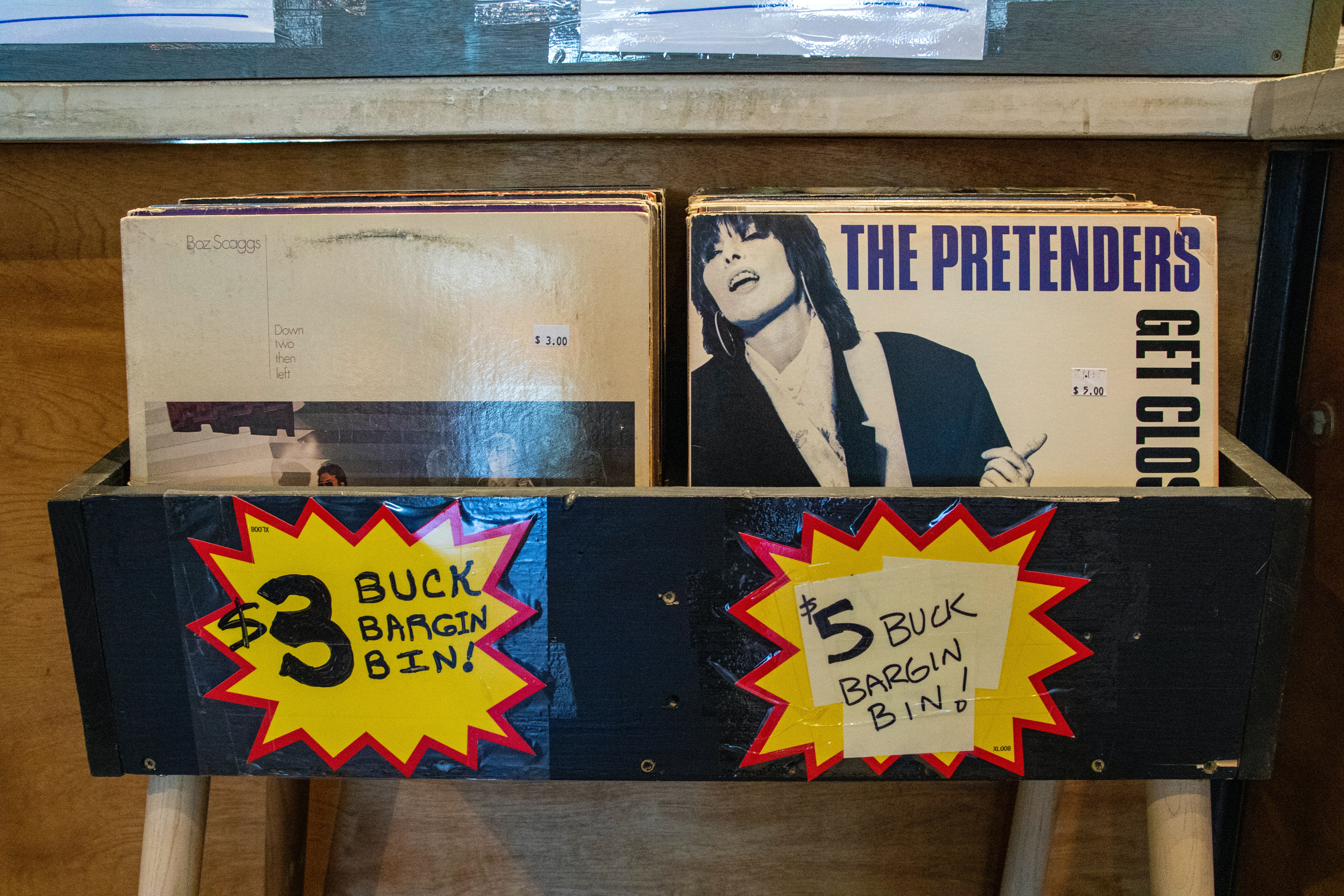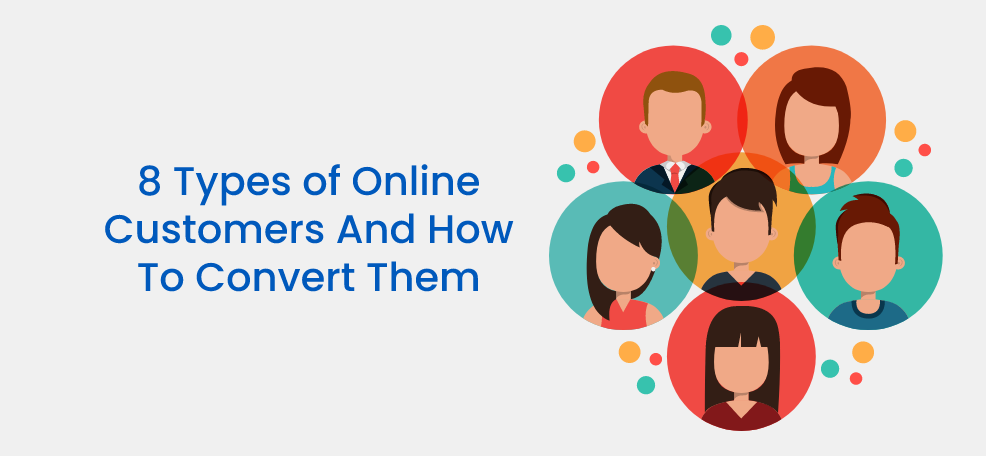Online shopping has become a worldwide phenomenon in recent years, with more than half of all people now buying something for themselves or others over the internet.
In this blog post, we’ll discuss the different types of online customers and how to get them to buy and earn customer loyalty.
We’ll talk about customer psychology and what motivates each type of shopper so you can use these insights to increase your conversion rates!
No matter what kind of customer visits your online store, you must provide a shopping experience that will make them return. This includes building an online store that loads fast, is easy to navigate, provides detailed product information, and delivers orders on time.
If you’ve got the basics covered, let’s look into the different types of online customers and tips for converting your customers into loyal repeat visitors who come back to buy more.
The Eight Types of Online Customers
The Buyer
This type of customer is in a hurry and just wants to get what they need without any hassle. It’s best not to fill their screens with too much information – if you’re using pop-ups, for example, it’s crucial that the contextual relevance and value are clear from the outset so this person doesn’t feel like he/she has wasted time reading your content.

The goal: Get them through checkout as quickly as possible! Streamline your pages by grouping products into categories or use one-page checkouts to simplify the process altogether. In addition, provide reviews on specific items which require more detail but don’t overwhelm people who aren’t interested in these details at first glance.
Good read: 5 Best Pop Up Practices to Boost Sales on Black Friday
The tech-savvy customer who likes to research products before they buy them
This type of customer is familiar with modern technology and uses the internet regularly. They shop online often and research products in-depth before purchasing. They are likely to shop online because they don’t want to go shopping physically.

The goal: Deliver content that helps this customer make a decision! Provide reviews, ratings, and detailed specs so they can easily find the product with features that suit their needs. If you are selling software, we recommend publishing blog posts on the topic, telling more about the technology behind it. For instance, imagine that you want to attract a person interested in acquiring an MQTT broker for an IoT project. In this case, you can publish an educational article and explain how an MQTT client and broker connection works.
If you sell products in different countries or regions, show local prices as well. This will help them narrow down their search instead of browsing through an endless list of items just for them to discover that it’s not available where they live.
The bargain hunter who loves a good deal
Bargain Hunters are always looking for great product deals, which is why online shopping sites like Amazon exist! They base their purchasing decisions on how much they can save. Bargain hunters don’t want to waste time going from store to store, checking out all the options before settling on one item and waiting around at checkout lines.
This customer enjoys hunting for bargains and deals online just as much as at physical stores by comparison shopping before making their purchase decisions. This type of person might even enjoy finding cheaper items than what you have listed simply because they get better kicks out of “winning.”

The goal: Get them to buy your product. Bargain Hunters want to get products at the lowest price possible, so highlight discounts and offers available on your site.
Offer a discount on the item they’re purchasing or bundle it with other items for sale on the site, so they can feel like they’re getting something extra that’s valuable and of good value in addition to what they had initially planned on buying.
Provide images, videos, and descriptions of any products you might be selling that are at risk of being sold out soon – this will encourage them to make up their mind quicker!
Bargain hunters often find themselves taking advantage of coupons during checkout- just offer one more coupon, and you’ve got yourself another happy bargain hunter who bought from your store today!
Bargain Hunters love deals, but if you want to get people hooked into making repeat purchases from you, ask for their email address so that you can keep them in the know about attractive deals on your products.
The “I’m not sure what I want” customer
If you’re planning on selling products in the “I’m not sure what I want” category, it’s essential to understand this customer type.
They might find themselves browsing through your site for hours or days without making a single purchase; they could go from product to product and never really make up their mind – which means no sale for you!

The goal: Sell to them by helping them decide. By providing them with some breadcrumbs leading towards purchases, like other people who’ve purchased the same product as well as products similar to the one they’re currently looking at, these customers will be happy just clicking around and thinking about what they might buy next time.
These individuals don’t need much help figuring out what they would like; it’s mostly a matter of giving them an extra nudge in the right direction. If you are able to get their attention and get them to consider an offer, they might make that purchase.
If they leave without making a purchase, don’t be discouraged. Encourage them to leave you their email and build a relationship with them with an email campaign.
The indecisive customer with an endless list of requirements
The indecisive customer will need a little bit of help with deciding what to buy. They often have an endless list of requirements and will ask questions like “What’s the best color?” or “Which size do you recommend?”

The goal: Sell to them by satisfying all their requirements and by making them feel that they’re in control. Always ask these customers a lot of questions so you can recommend the best products for them, and don’t forget to give them plenty of time to think about their decision!
To make them happy, it might be worth creating a wishlist-type section where they can save all their favorite products for later viewing and decision making and offer different filters to narrow down product selections by type.
They are usually delighted if they get that one extra thing off their lists. You’ve managed not only to sell somebody something but also relieved some stress! It is a lot more complicated than selling to somebody who already knows what they want, but you will have made them happy in return for your patience and guidance.
The impulsive buyer
These customers will often want to buy something on impulse and are not concerned with the price. They might need reassurance that it is a good purchase, so make sure you have solid customer reviews or positive product testimonials!

The goal: Sell to them by reassuring them! If they’re willing to spend money quickly without much consideration for whether it was high quality, they may also need reassurance that what they bought will do them good in the long run – this means presenting any relevant information about the product when possible.
It’s all about making them feel happy about the product purchase decision they have made and reassuring them of its quality- even if it doesn’t mean buying more than one item from your store.
The conscientious customer
This kind of person knows what they’re looking for before going online shopping but will still use the different tools available on your site to compare prices and think about what they are purchasing. They want a good deal but will only buy if the return policy is fair, or they trust you as a seller.

The goal: Sell to them by earning their trust and allowing them to find what they want at an affordable price while also providing a quality product that lives up to expectations.
These people are less likely to be impulsive buyers, so it’s important not to sell them with discount coupons- instead, offer other benefits like free shipping for over $50 spent to help close that sale!
Quality Seekers
Quality Seekers don’t mind paying more if it means getting something with added value. Quality Seekers are loyal customers who will buy again in the future, so it’s essential to provide them with quality products that not only live up to their expectations but also exceed them!

The goal: Sell to them by demonstrating the product’s quality and displaying information about each product’s craftsmanship, materials used, etc., justifying a greater price tag.
This will show customers how much time and care went into creating their order, allowing them to make a purchase decision based on these details alone, without seeing other items that are priced similarly.
Wrap Up
Different customers have different needs when they visit an online store; some might need a bargain while others may want quality.
It’s important to know what each customer wants so that you can present your products in a way that will make them feel confident about buying from you. This means presenting all prices with no hidden fees, easy navigation between pages, quick loading times for pages, and good content to help them make a purchase.
This post has been designed to guide you through the different types of online customers and help you understand how they think.
You can then use the data in your marketing strategy to increase conversions, reduce cart abandonment rates or improve customer satisfaction ratings. Which type do YOU identify with?
Author’s Bio: Amrapali is a digital marketing consultant who blogs about business and marketing at Bazaar Expert.




